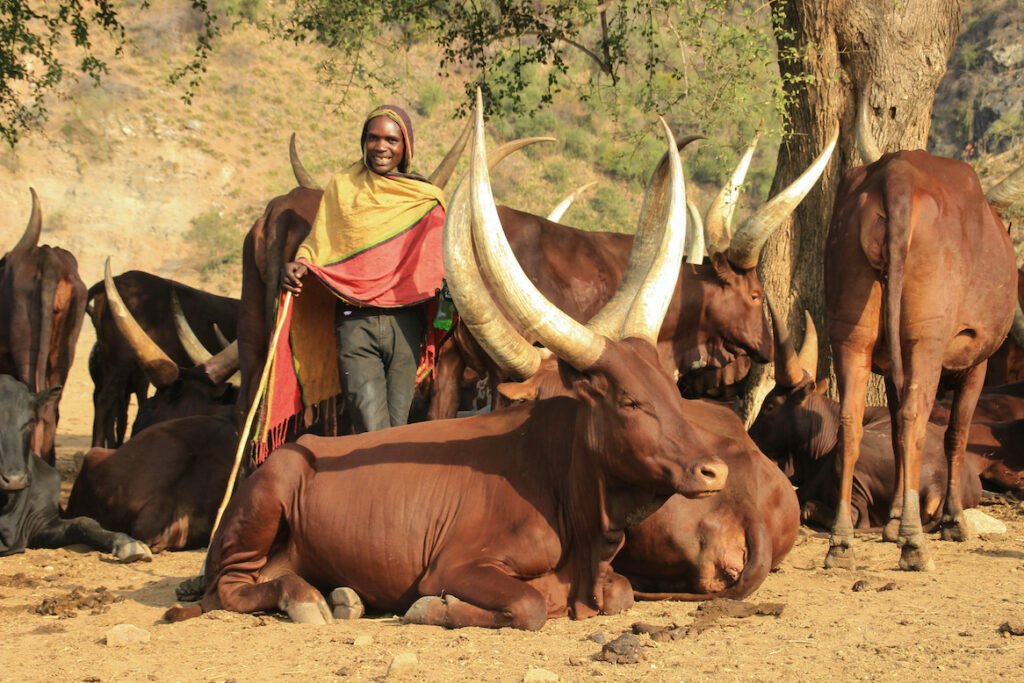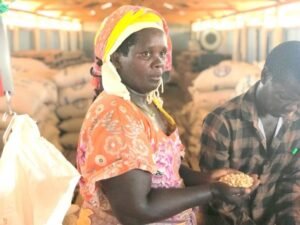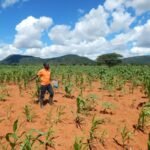By Richard Wetaya, Cornell Alliance for Science, 15 July 2020
Uganda’s agricultural ministry is working to boost incomes, expand exports and support local food security through livestock farmer training and access to improved animals.
Livestock is an important source of income for more than 80 percent of the households classified as poor in sub-Saharan Africa. In Uganda, more than 50 percent of the households depend on livestock for their livelihoods. Agricultural officials are hoping to both expand exports and feed Uganda’s growing population more sustainably through its new Lusenke transformational project.
Some 5,000 livestock farmers will be trained at the 4,480 acres Lusenke stock farm in central Uganda once COVID-19 restrictions lift. The farmers will be trained in livestock management practices such as disease control, breeding and nutrition to boost productivity, said Dr. Charles Lagu, executive director of the National Animal Genetic Resource Centre and Data Bank, which is overseeing the project.
“Better livestock productivity, increased livestock numbers, an end to endemic livestock diseases, adequate feed resources, etc., will be tantamount to more livestock exports and livestock product exports to other countries in the region,” Lagu said.
The project will extricate many smallholder livestock farmers in Kayunga and other areas in Northern Buganda out of poverty, said Amos Lugolobi, the area’s Member of Parliament. Some 22 percent of North Buganda residents live below the poverty line, compared to 5.9 percent in the capital city of Kampala.
It is anticipated that average monthly household incomes in the project’s area of focus will increase to US$125 — slightly higher than the national average of $113 but lower than the Kampala average of US$267.
The project also will support livestock farming communities with quality livestock breeds as well as enhance their capacity to serve as reference points and demonstration farms in aspects of profitable livestock enterprises, animal production and livestock farm management practices, Lagu said.
Godfrey Gidu, a cattle farmer from Lusenke village, has struggled to keep cattle diseases such as foot-and-mouth disease at bay. He’s upbeat about participating in the project.
“I see a steady stride for my business upon getting knowledge from the training sessions I will attend in the post-COVID-19 period,” Gidu said.
Grace Namuwenge, a 37-year-old smallholder livestock farmer from Busaka village, is also set to gain from the project.
“This project will enable me to crossbreed,” she said. “It is something I have always wanted to do. I will get more dairy cows and goats with high genetic potential for better milk production.”
Lagu projects that by the time the project ends in 2024, the livelihoods of many small-holder livestock farmers will have been transformed through enhanced livestock production and productivity in the project’s area of focus.
Uganda currently has some 14.2 million cattle, 16 million goats, 4.5 million sheep, 47.6 million poultry and 4.1 million pigs, according to data from the agricultural ministry and the Uganda Bureau of Statistics. The country is currently a net exporter of livestock products and live animals, primarily dairy products and eggs. Meat and meat products play a minor role.
“Our farmers will have access to affordable and quality animal breeds,” Lugolobi said. “The over 100 extension workers will ensure that farmers get knowledge on improved animal breeding and other livestock production improvement techniques.”
Credit : This article ran at Cornell Alliance for Science website https://allianceforscience.







